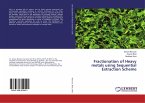Sagwan (Tectona grandis) is a tropical hardwood tree belongs to Lamiaceae family. It is also commonly known as ¿teak.¿ The family ¿Lamiaceae¿ includes about 236 genera and 6900 to 7200 species. Tectona grandis is a large, deciduous tree that is dominant in mixed hardwood forests. This plant is native to South and Southeast Asia, mainly India, Indonesia, Malaysia, Burma and Thailand. Nearly one third of the world's total production of Sagwan is done by Burma. Tectona grandis has small, fragrant white flowers and papery leaves that are often hairy on the lower surface. It has worldwide reputation as a quality timber on account of its remarkable physical and mechanical properties, particularly elasticity, strength, durability and decay resistance. The main active compounds that are responsible for these action are tectoquinone, lapachol and deoxylapachol. Naphthoquinones, anthraquinones and isoprenoid quinones are abundant metabolites in Sagwan.








